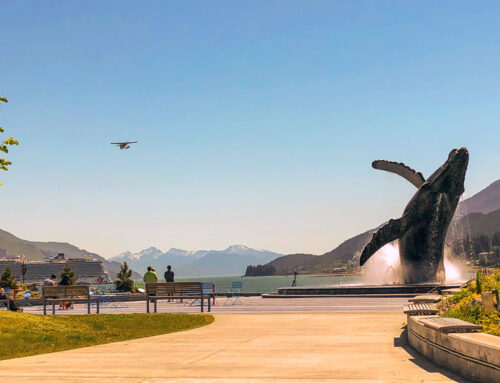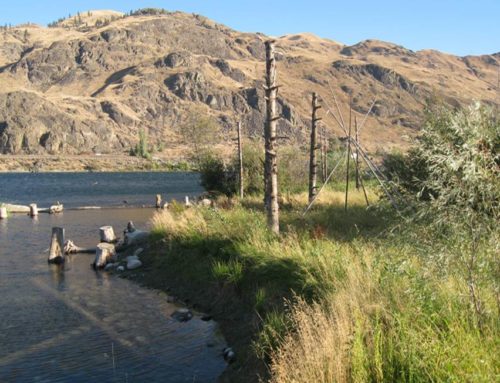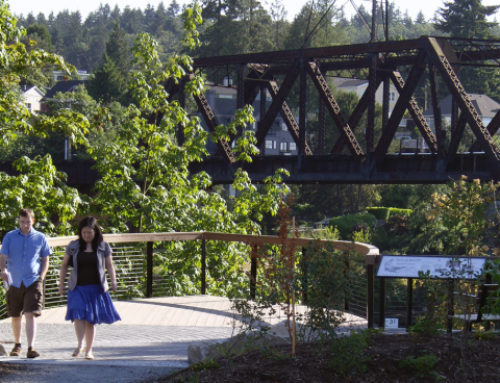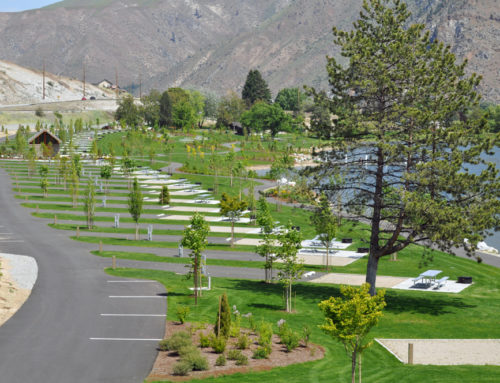by Drew Coombs
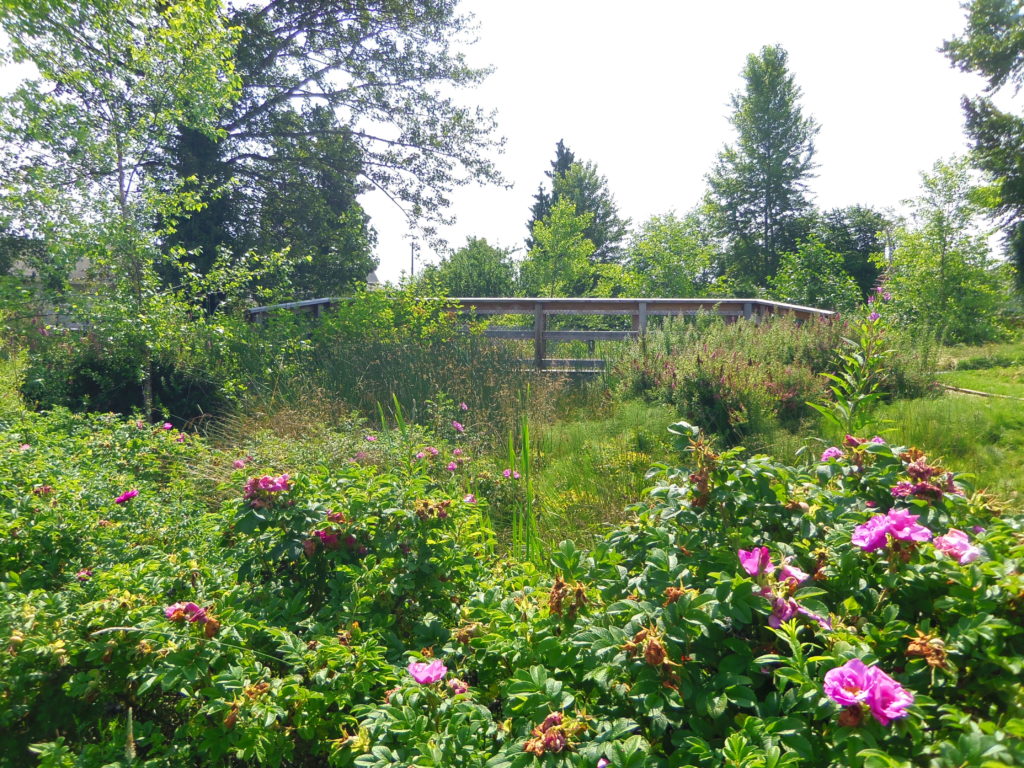 Background
Background
In 2008-2009 J.A. Brennan provided design services for a bio-filtration drainage system at Marra-Desimone Park. We collaborated with Davido Consulting Group to improve roadway drainage in this South Park neighborhood for Seattle Public Utilities (SPU). For more background info see here.
We return to the site two to three times a year to evaluate the performance of the plants and to see how the system as a whole is functioning. The focus of this article will be about plant selection and the success of certain species. I’ve kept the discussion to a select few plants as there is a diverse plant palette and I could get carried away…
Performance
With the early onset of summer I visited the site with my co-worker Meghan to see how the system was faring. Given that the local weather personalities had recently described the season as Junuary due to unseasonably wet and cool weather in our region I was anticipating the plants to only be performing at an O.K. level. To my pleasant surprise the majority of the plants looked robust, vigorous, lush, beautiful and healthy. (How many words can you use to describe a good looking plant!?)
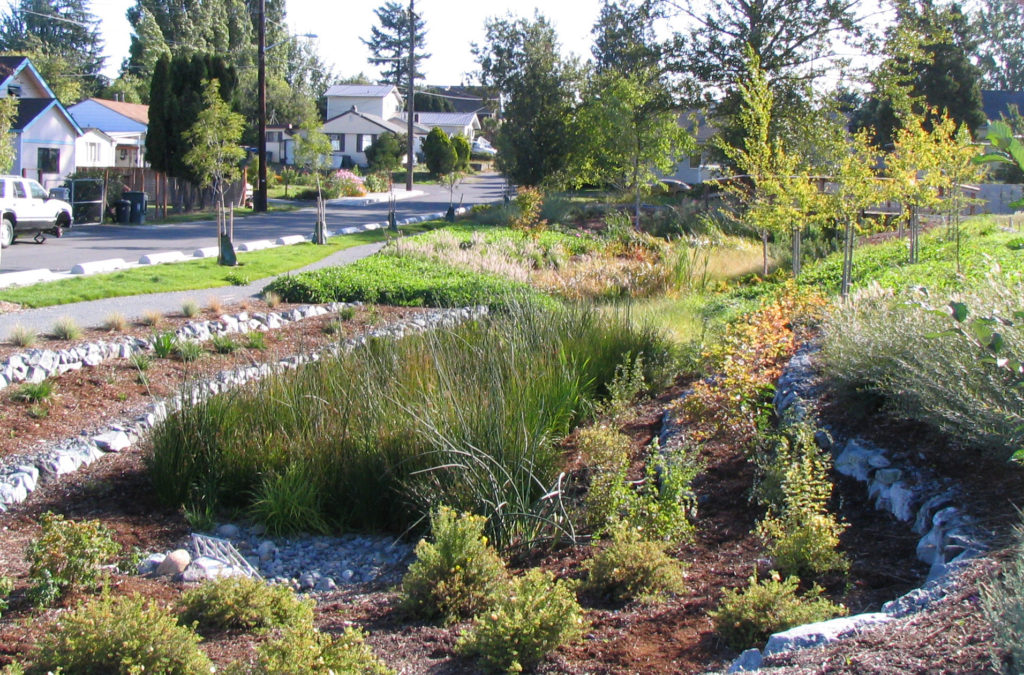
Plant Selection
During design we carefully selected emergent marsh species appropriate for the wet and dry conditions of the bio-filtration system. The upland plants reflect the context and character of the Marra Farm community garden and urban farm environment. A selection of native plants and fruiting ornamental plants were used to attract wildlife and suggest the farm quality of the site.
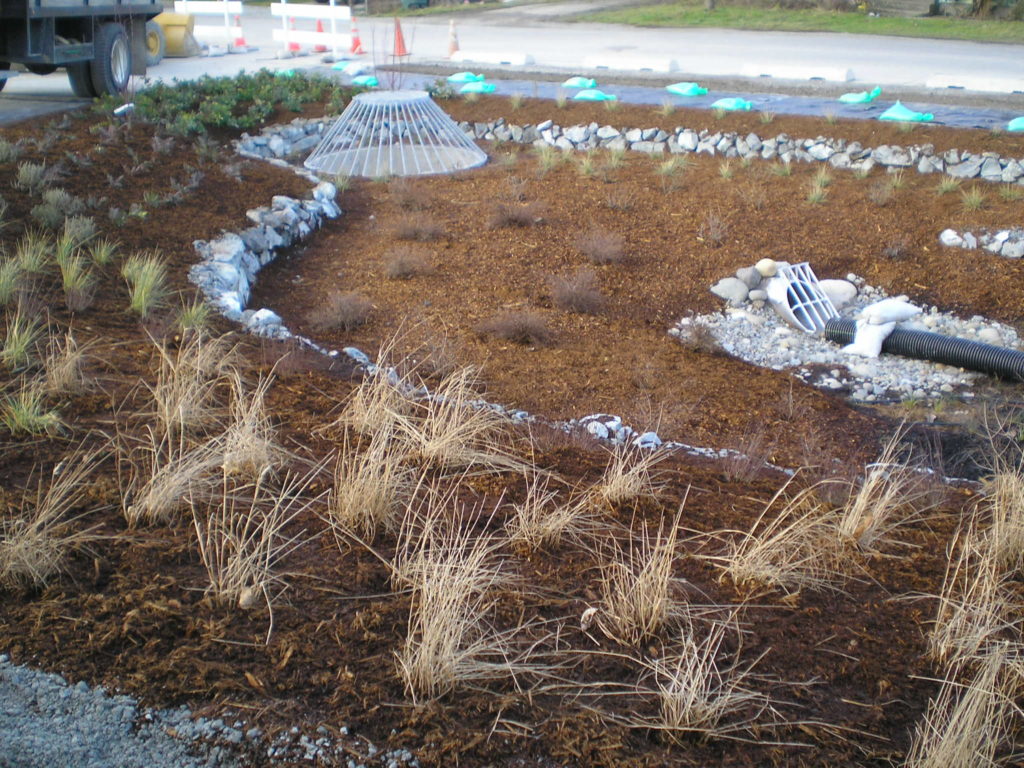
OLYMPUS DIGITAL CAMERA
Seeds versus Plugs?
Plants were an expensive part of the project. During design, to meet the project’s budget, we made a decision to use a combination of seed and plugs in the bottom of the bio filtration swale. The combination of seed and plugs of emergent species reduced the quantity of emergent plugs required and provided some savings during construction. (Emergent plugs are more expensive than seeds).
I have to say after four years, it’s not possible to distinguish the areas that were seeded from the areas that were planted with plugs. The system as a whole appears to be performing well.
Performance
The emergent plants species doing particularly well are the Carex sp (sedge) and the Scirpus microcarpus (small fruited bulrush). Both are content and performing as planned.
Of the shrub species, Cornus sericea ‘Kelseyi’ (Kelsey dogwood) and Salix purpurea (Arctic willow) look wonderful.
We used a select few groundcover species. The one plant that is struggling and has had a high rate of loss is Mahonia nervosa (Low Oregon grape). The site may have been too exposed for this particular plant.
Overall the plants are performing quite well and the system as whole is performing as designed. There is little evidence of invasive plants like blackberry or reed canary grass.
The performance of the plants is a combination of the selection but also a measure of the ongoing maintenance by the owner, in this case SPU and Seattle Parks. It is my understating that SPU staff continues to maintain the swale.
In conclusion, with proper maintenance and irrigation, it is apparent, given the right conditions during the early establishment period, that the application of seed in combination with plugs appears to be a successful approach within this bio-filtration system.

